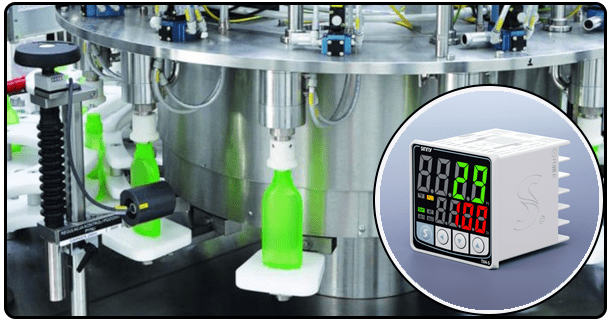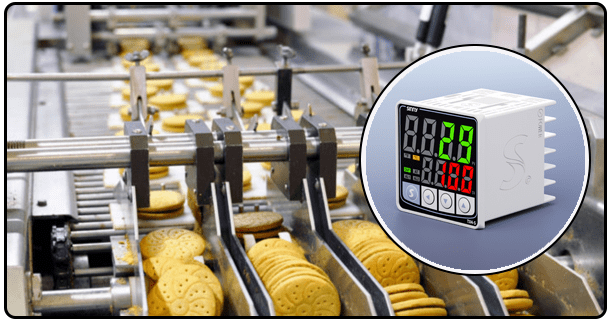SSR PID Temperature Controller – Precision Heat Management Guide
Learn how to set up, optimize, and implement an SSR PID temperature controller for precise thermal regulation in industrial and DIY applications. Discover expert tuning methods for maximum efficiency.
1. Introduction
In modern temperature control systems, achieving precise and stable heat regulation is crucial for both industrial applications and DIY projects. SSR PID temperature controllers have gained immense popularity due to their efficiency and reliability. This article explores the fundamentals of PID temperature control, the role of Solid State Relays (SSRs), and how they enhance heat regulation across various domains.
Temperature control is essential in numerous fields, including manufacturing, food processing, laboratory experiments, and home automation. Conventional ON/OFF controllers lack the accuracy required for maintaining stable temperatures, leading to inefficiencies and inconsistent performance. PID (Proportional-Integral-Derivative) controllers, when combined with SSR switching, offer a refined approach to managing thermal stability.
This guide provides an in-depth understanding of SSR PID temperature controllers, their components, setup procedures, optimization techniques, and practical applications. Whether you are a professional engineer or an enthusiast working on temperature-sensitive projects, this article will equip you with valuable insights into implementing a high-performance temperature control system.
Understanding PID Control
2. What is PID Control?
PID control is an advanced method used to regulate temperature by continuously adjusting heating elements to maintain a stable setpoint. It relies on three primary components:
·
Proportional (P): Adjusts the power output based on the deviation from the set temperature.
·
·
Integral (I): Accounts for past errors to eliminate cumulative temperature deviations.
·
·
Derivative (D): Predicts future errors to minimize overshooting and fluctuations.
·
By dynamically balancing these three factors, PID controllers ensure precise temperature regulation, making them superior to conventional ON/OFF systems.
Role of SSR in Temperature Control
3. What is an SSR (Solid State Relay)?
An SSR is an electronic switching device that operates without mechanical components, providing faster and smoother switching. Compared to traditional electromechanical relays, SSRs offer several advantages:
·
Noise-Free Operation: Since there are no moving parts, SSRs switch silently.
·
·
High-Speed Response: Enables rapid switching, crucial for maintaining precise temperature control.
·
·
Long Lifespan: Minimal wear and tear ensure durability over extended usage.
·
·
Lower Power Consumption: More efficient than mechanical relays.
·
When used with PID controllers, SSRs enable accurate and responsive temperature adjustments, significantly improving performance.
4.Components of an SSR PID Temperature Controller
To construct an SSR PID temperature controller, the following components are required:
·
Temperature Sensor: Common options include Thermocouples (K-Type) or PT100 sensors.
·
·
PID Controller: Hardware or software-based controllers (e.g., Arduino, Raspberry Pi, or dedicated PID modules).
·
·
SSR Module: Switches the heating element on/off based on PID output signals.
·
·
Power Supply: Ensures stable operation.
·
·
Heat Sink: Prevents SSR overheating during prolonged use.
·
Each component plays a vital role in delivering precision heat management, ensuring optimal results across various applications.
5. Setting Up an SSR PID Temperature Controller
Step-by-Step Guide
1.
Connect the Temperature Sensor to the PID controller.
2.
3.
Integrate the SSR module with the heating element.
4.
5.
Configure PID parameters to optimize response time.
6.
7.
Ensure power supply stability to prevent voltage fluctuations.
8.
9.
Perform initial testing to adjust tuning settings.
10.
Proper setup prevents temperature drift, ensuring consistent and precise control over heat-sensitive environments.
6. Optimizing PID Settings for Temperature Stability
Fine-tuning PID parameters significantly impacts temperature accuracy. Here are common optimization strategies:
·
Manual Tuning: Adjust P, I, and D values based on system response.
·
·
Auto-Tuning: Some PID controllers offer self-optimization functions.
·
·
Mitigating Overshoot: Carefully balance proportional and derivative components.
·
·
Eliminating Oscillations: Modify integral values to prevent fluctuations.
·
Understanding tuning methodologies allows users to achieve maximum stability in diverse applications.
7. Real-World Applications
Industrial Usage
SSR PID controllers play a vital role in industries requiring consistent heat regulation, including:
·
Manufacturing: Ensures precision in heat-based processes.
·
·
Chemical Processing: Maintains controlled reaction temperatures.
·
DIY and Home Projects
Enthusiasts frequently use SSR PID controllers in:
·
Sous-Vide Cooking: Perfect heat control for food preparation.
·
·
3D Printer Heat Beds: Ensures uniform temperature distribution.
·
Case Studies
Several industries have successfully integrated SSR PID controllers for efficient thermal management, leading to cost savings and performance improvements.
8. Conclusion
An SSR PID temperature controller is a highly efficient solution for precision heat management, whether in industrial applications or DIY projects. By understanding the principles of PID control, integrating SSR switching, and optimizing tuning settings, users can achieve accurate temperature regulation.
For further insights, explore reputable sources such as Arduino Forum and Technical Guides.
- Temperature Control PID C Code - Implementation Guide for Precision Heat Regulation
- RS485 Modbus PID Temperature Controller | Precision Meets Connectivity























